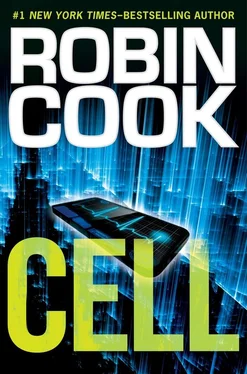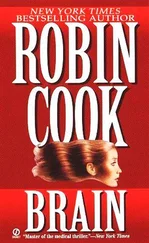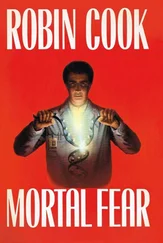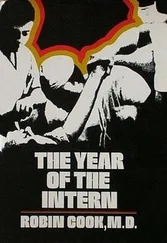George was silent. They seemed to have all the bases covered, and covered well. He still didn’t want to believe it was all so nice and tidy, but there was little he could say that would sound reasonable.
“A doctor working here in the call center isn’t all that different from a radiologist like yourself. You’re both just interpreting data generated by technology.”
George ignored the comment and moved to firmer ground. “You’re blurring the line of what a doctor is by cutting the primary-care physician out of the equation and acting as one yourself. ‘Yourself’ being Amalgamated, an insurance company. When did their executives go to medical school?”
Paula stared at George with her lips pursed. “A blue-ribbon team of the nation’s top doctors contributed their knowledge and experience to the development of our algorithm. iDoc also has all known and recorded medical knowledge at its disposal — textbooks, lab studies, journal articles. In short, it is the most knowledgeable doctor in the world, and it forgets nothing and is constantly updated. On top of that, it has the added benefit of continuous, real-time vital signs. It can compare that data against the patient’s complete medical history in less than two-tenths of a second. It can take any new information, such as test results, and compare it to the patient’s historical data and all known medical knowledge and make a diagnosis in less than half a second. I don’t mean to offend you, George, but with a choice of being treated between you or iDoc, I choose iDoc.”
“Well...,” George said, clearing his throat. “I appreciate your candor. Point taken.” He wasn’t offended so much as surprised at her frankness. If iDoc was half as good as they claimed, she was right. He decided to ask how iDoc would affect him if he were sick, thinking of his stint in the ER beginning the next day. “How does it work when someone has to go to the emergency room?”
“It’s simple. If the hospital is owned by Amalgamated Healthcare, which is a distinct possibility, since we’ve bought up a number of hospital chains, we’ll soon have an integrated and automatic wireless hookup. iDoc will know when a client-patient enters one of our hospitals, and it will alert the staff because iDoc will have sent the patient to the hospital in the first place. Theoretically, client-patients will not even have to approach anyone on staff; they can just take a seat. The appropriate personnel will be alerted to their presence and can locate them by both GPS and facial recognition. Staff will know why that individual is there, if not by iDoc vital sign readings and known medical history, then by having been told why the patient asked to go to the ER. iDoc will forward that information through the appropriate channels. Basically, you will be triaged immediately upon entering the facility. If it is not an Amalgamated hospital, the iDoc physician will consult directly with the emergency room physician, explaining why the patient needed emergency care, or the patient’s medical history and vital stats can be downloaded by a licensed handheld device provided to the ER by Amalgamated. The information can then be uploaded into the hospital’s computer system and accessed by the ER staff. Handheld downloads are how our beta testers are operating now.”
George tried to think of other reasons why he thought iDoc wouldn’t work as well as Paula believed, but he couldn’t come up with any. He wasn’t sure exactly why he hoped the system would fail, although he guessed it had something to do with his viewing it as competition. He changed the subject: “Are you really an iDoc user or was that story you told about strep for effect?”
“I absolutely am an iDoc user, and I love it like everyone else.”
“Let me see it?”
“Not concerned about HIPAA, huh?” Paula teased as she pulled out her phone and opened the app. She held the phone up a foot away with the screen facing her and asked: “How are my vital signs today?”
A crisp but caring woman’s voice responded in a slight English accent. “Hello, Paula. Your phone is on speaker. May I proceed?”
“Yes. Speakerphone is fine.” She glanced at George and turned the phone so that he could see the screen. On it was an animated image of an attractive woman in a white doctor’s coat. Speaking to George, Paula whispered: “I always loved English accents. They seem so authoritative and reassuring.”
“Excellent,” Paula’s iDoc doctor responded to Paula’s giving permission to proceed. “Your vital signs are entirely normal, but about an hour earlier, there was the suggestion of anxiety, not enough to warn you about but enough to alert me that something out of the ordinary was happening. I also noticed that your sleep was interrupted last night. Your periods of deep sleep were shorter than usual. How are you feeling?”
“Much better. I was anxious about a big presentation I had to give this morning. I should have given you warning.”
“I do appreciate as much information as possible in advance.”
“Okay. Bye.” Paula closed the app.
George grinned, impressed. The short interaction was uniquely personable. “Nice. Much better than I imagined.”
“The program is heuristic, too, like you heard at the presentation. So much so that my iDoc avatar has been learning to relate to me in the manner I like to be talked to. I can’t say that any of my primary-care doctors ever bothered to.”
“You have a point there.” George checked his watch. “I have to get back to the hospital.”
“I’ll go out with you. I have to get back to the potential investors.”
She accompanied George to the elevator. After the doors closed Paula said softly, “I wish your mother had had iDoc.”
The comment startled him. “Thanks! Me, too.” George realized his mother might still be alive today if she had had such a device.
“During the development process, I included a test that I named ‘Harriet.’ For your mom.”
George turned and studied Paula’s face. He didn’t know what to say in response, as it was truly a generous gesture. Paula was full of surprises today.
“Also, I insisted that an anti-addiction program be included for specific drugs, alcohol, and particularly cigarettes, such that iDoc knows immediately when any are ingested. iDoc will interrupt and initiate a conversation with the patient. Not like after one glass of wine or anything, but if certain levels are reached or heavy habits established, it will take action.”
While George was touched by her thinking of his mother, he couldn’t shake an underlying resistance to the app. “Won’t that be just plain irritating? Sounds like it could be viewed as Big Brother.”
“I’m sure it is irritating to some people, and they can decline the conversation. If they do that, it won’t continue to hector them. But that is not what has happened in the beta test. In fact a number of our smokers have been able to quit. Immediate intervention with every episode seems to help a lot of people. Patients can’t hide their habit from iDoc because it constantly searches for offending agents.”
“I guess that might be helpful,” he said, wondering if it might have gotten his mother to stop smoking, but he doubted it. She would have just turned the app off.
“Well, thanks for the tour,” George said as they walked across the lobby. “And for inviting me to the presentation.” He thought briefly about bringing up the fact that Kasey had been part of the iDoc beta study and had died possibly because her phone had been charging, but he couldn’t do it. He didn’t want to think about Kasey, much less talk about her with Paula.
“You okay? With all of this?” Paula sensed George was a little overwhelmed.
“Would it matter if I wasn’t?”
Читать дальше












